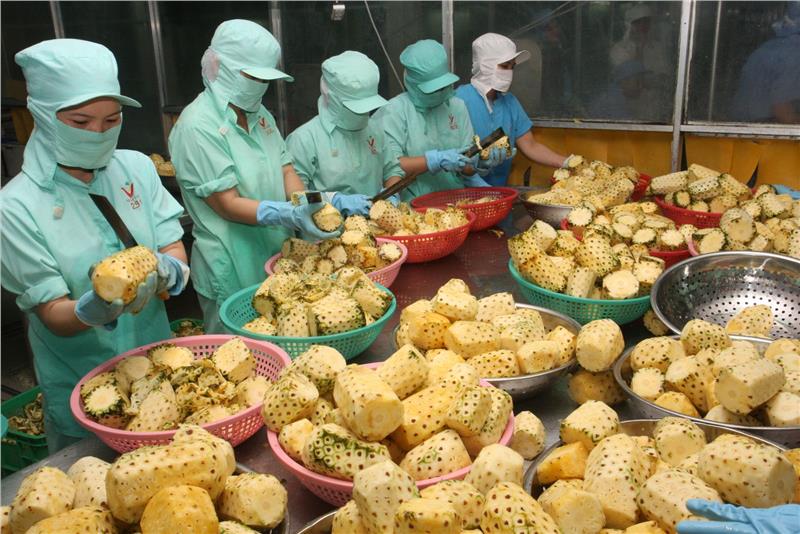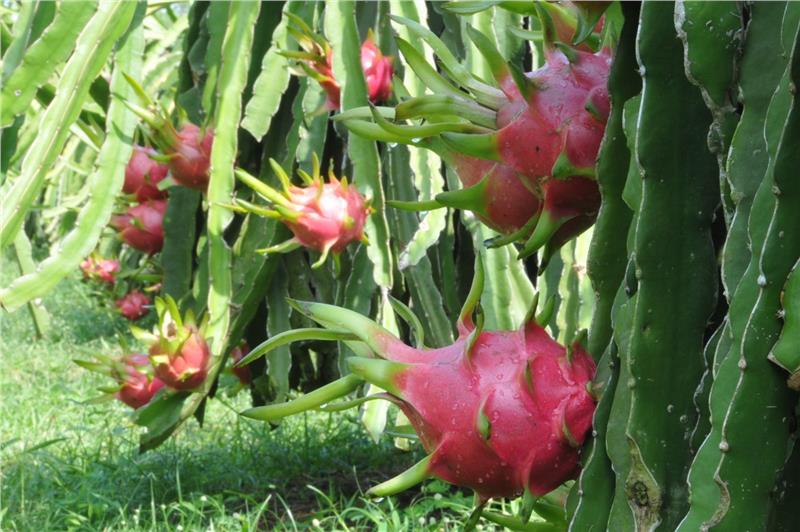Being a tropical climate country, especially in southwest region, Vietnam has rich lands with immense orchards and various kinds of fruits all year round. Fruit is one of the key Vietnam products in markets in EU and American. Recently, there is a good news that American market opens door for Vietnam fruit such as longan and lychee. In the future, the market, Japan, Australia, New Zealand, and Taiwan will also import some other specialties such as star apple, dragon fruit, rambutan, lychee, and mango. Here is a big chance for Vietnam fruit to surpass in the world market.
According to Nguyen Xuan Hong, director of the Department of Plant Protection, Ministry of Agriculture and Rural Development, Vietnam has great advantages of exporting fruit. For example, Vietnam dragon fruit is regarded as the best one in the world. Many countries want to import such fruit as mango and lychee. Mr. Nguyen Xuan Hong said that the United States imports more lychee and longan of Vietnam, along with dragon fruit and rambutan is a move opening up the opportunity for Vietnamese fruit to penetrate deeper into the United States as well as other demanding markets. It is also an opportunity for Vietnam enterprises to export vegetables, decrease dependence on Chinese market and ensure sustainable growth.

Even so, Mr. Nguyen Xuan Hong also warned that to export fruits to difficult markets such as EU, Japan, and USA, it is a need to meet the demanding requirements of food safety, phytosanitary measures by methods of irradiation and steam processing. At the same time, it is necessary to organize production, plan a large growing area with traceability system as code of planted area, code packing facilities, and code of processing plant.
Looking back on exports of dragon fruit and rambutan to the United States, Japan, and South Korea last time, Nguyen Huu Dat, director of the Center for Plant Quarantine of imports, said since 2008, dragon fruit started to export to America. Since then, the export to the market is growing, from 100 tons (2008) to 1,000 tons in the first six months of 2014. In spite of being competed strongly with Thailand and Mexico, Vietnam rambutan with the advantage of producing the fruit all year round. The rambutan output is stable. The amount of dragon fruit export to Japan and Korea reached about 4,900 tons, after the first six year in 2014. "Enterprises in Vietnam need to take advantage of allowed fruit in the US such as coconut; enhance to export bananas to the US and Japan, as bananas can be harvested when they are unripe, and do not need to undergo riping process", said Mr. Nguyen Huu Dat. He added, Vietnam has a potential of producing and exporting many fresh fruit; thus, it is necessary to have an active strategy to consume products and have unified export control. There should have promulgation programs on Vietnam fruit in the country and in the world to expand the market, especially programs in not-easy-going markets of both quantity and quality.

Some programs as examples are putting Vietnam fruit on sale in supermarkets in the US, setting up chains of wholesales and retails of fruit in big cities of the US, owned by Vietnamese enterprises. Or, there is program on introducing dragon fruit in three main islands in Japan. When the market opened, the next task is how to organize the production to meet the requirements of importing countries. According to Nguyen Tri Ngoc, Director of the Department of Natural Farming, the most difficult for Vietnam production is scale of organization still small and scattered. While there are some large and focal areas of large-scale commodity production, but business capabilities are limited. When Vietnam businesses are limited, which makes it difficult to disperse the quality assurance and market's stability.
Besides, technology of post harvest storage is a weak point in the value chain of commodity production. If lychee, in particular, does not have a protecting process to ensure the quality, it will get difficulties in entering US market. Under the Plant Protection Department, although the amount of spices exports to the EU accounted for only a fraction of the items other vegetables, but open to negotiation and is a product exports to the EU is extremely difficult. According to the Ministry of Agriculture and Rural Development, during nine months, export of vegetables reached $ 1.1 billion, up 39% compared to the same period in 2013, particularly fruit and vegetable surplus of $ 708 million. This also proves the great development of Vietnam agriculture in recent year. In 10 export markets of Vietnam fruit and vegetables, China remains the leading market, accounting for 28.6% market share, followed by Japan, South Korea, and the United States but with very small market shares of only 4, 74%, 3.76% and 3.44% respectively. It is expected at the end of 2014 or early 2015, Vietnam continues to export star apple and mango to the United States, red dragon fruit and mango to Japan, dragon fruit to Taiwan, rambutan to New Zealand, dragon fruit, lychee and mango to Australia.